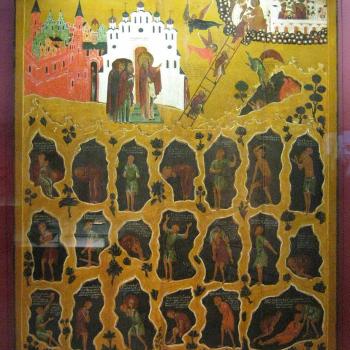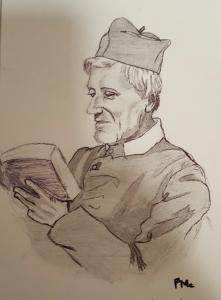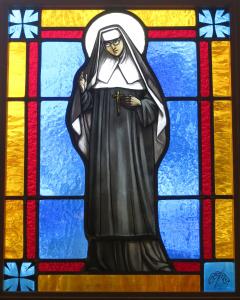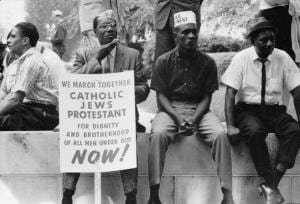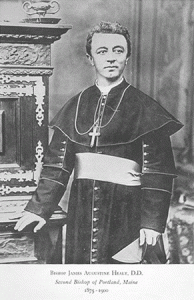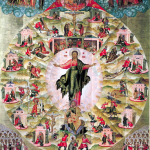By the time Pius VI died, the Roman Curia was in disarray, the College of Cardinals was dispersed, and several cardinals had been imprisoned, thanks to Napoleon Bonaparte. The Conclave of 1800 was held on the Island of San Giorgio, in Austrian territory. Some cardinals felt that the Church should try to reach a modus vivendi with France (politicanti) and those who wanted to assert the Church’s independence (zelanti). A compromise candidate was found in the 58 year old Benedictine Cardinal Luigi Barnaba Chiaramonte, Archbishop of Imola. The Concordat of 1801 substantially improved the situation of the French Church. When Pius was elected, Talleyrand described him as a “simple, good and very peaceable man… but without the least presence.” In 1804, Napoleon had Pius crown Emperor of the French in Paris, but snatched the crown away from him at the last moment as if to let him know who was really in charge. Still, Pius was not the puppet Napoleon wanted him to be. In 1807, Napoleon tried to force Pius into joining a league of Italian princes against England, and he demanded more French Cardinals in the Sacred College, but Pius refused both demands. In May 1809, Napoleon annexed the Papal States. For the next five years Pius was a prisoner of Napoleon, who tried to move the Vatican to France. Pius went on living simply in captivity like a monk, saying his office, washing his own clothes, and refusing to invest any more French bishops. Finally in May 1814, as his own political situation worsened, Napoleon returned the Pope to Rome, where he was greeted as a hero. The papacy was strengthened by this experience in the long run, as one scholar notes: “The fact that the papacy had the courage to defy the tyrant when all other governments bowed before him, lent a moral prestige of which the governments of subsequent generations had to take account.”






